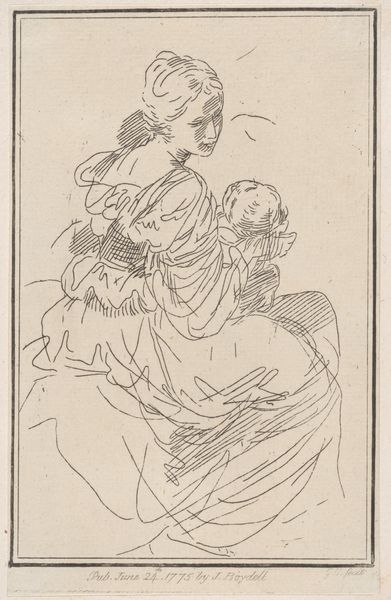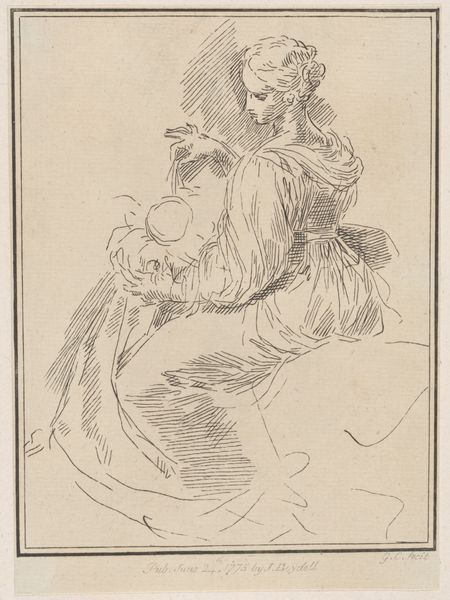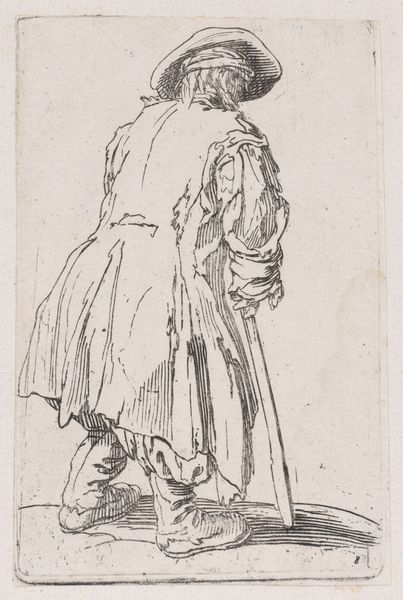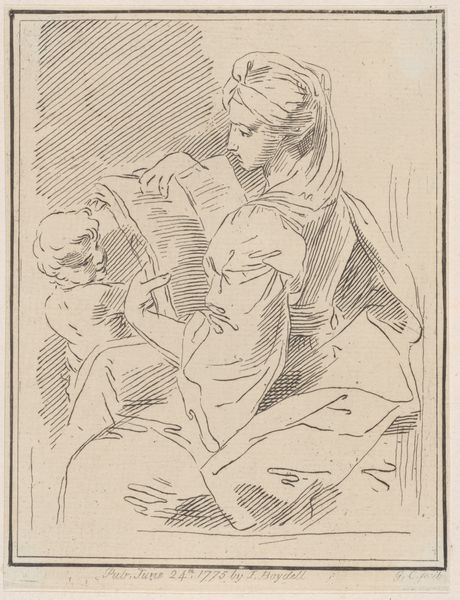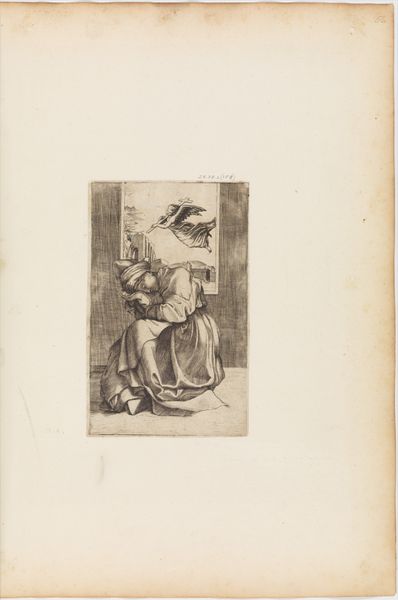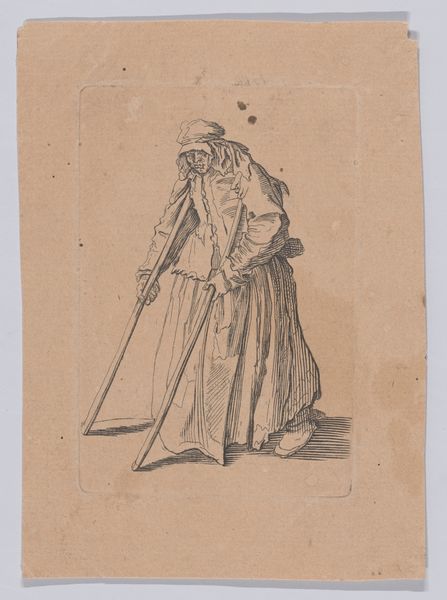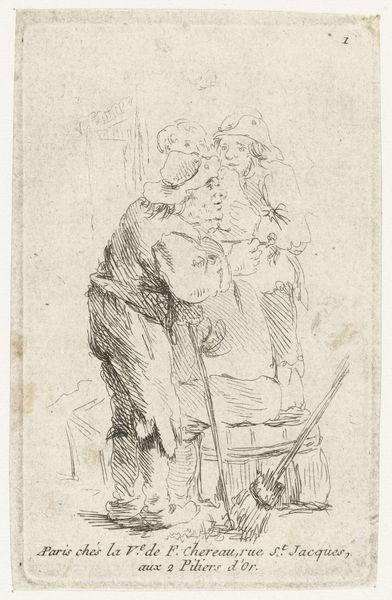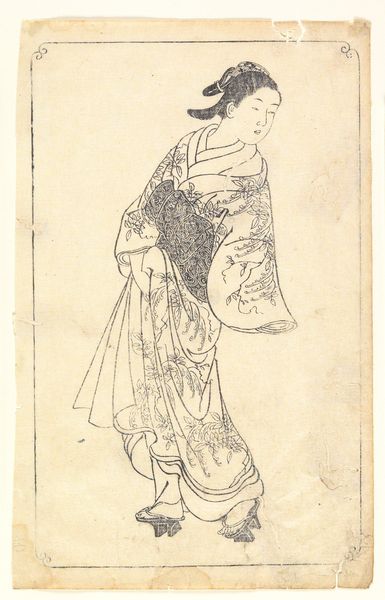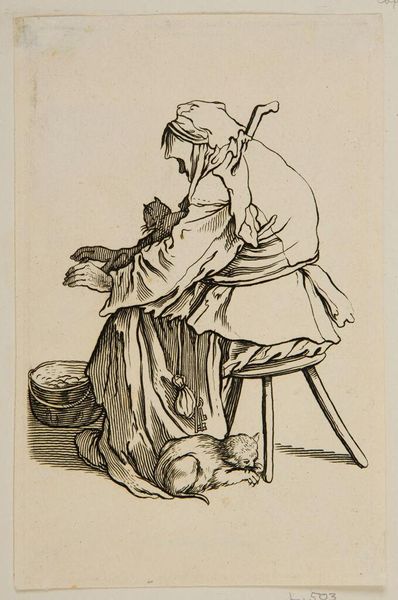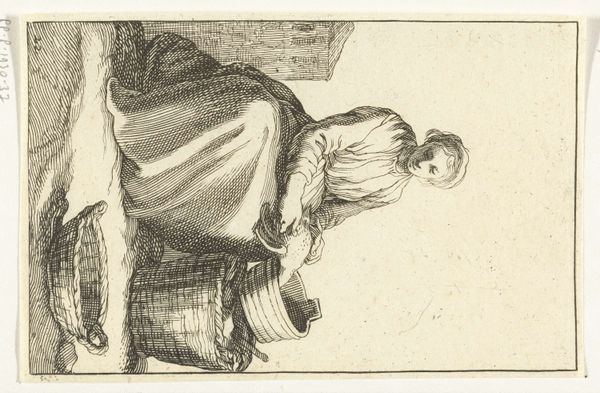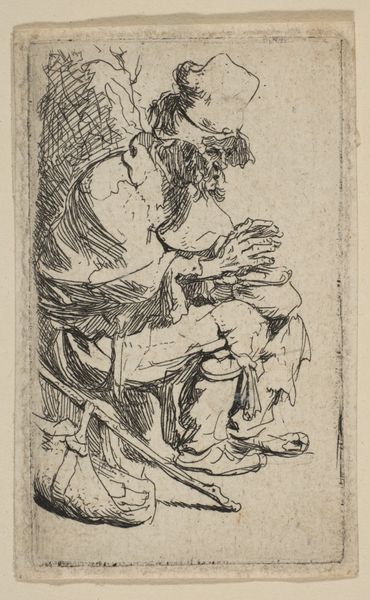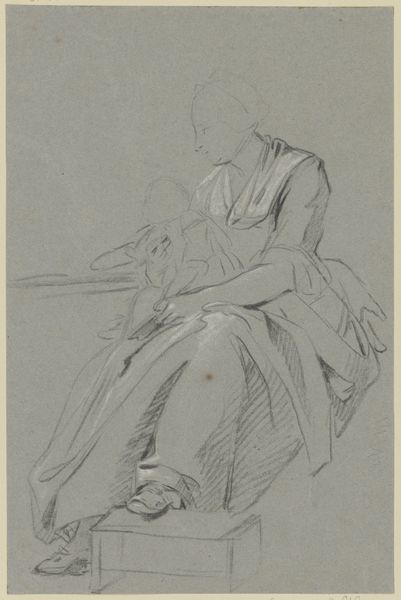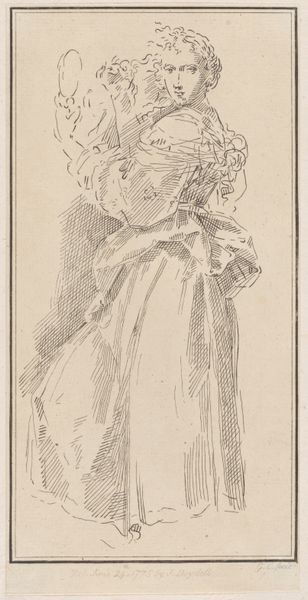
Copy of La Vieille aux Chats (The Old Woman with Cats), from "Les Gueux suite appelée aussi Les Mendiants, Les Baroni, ou Les Barons" (The Beggars, also called the Barons) 1625 - 1700
0:00
0:00
drawing, print
#
portrait
#
drawing
#
baroque
# print
#
figuration
#
line
#
genre-painting
Dimensions: Sheet: 5 1/4 x 3 3/8 in. (13.4 x 8.5 cm)
Copyright: Public Domain
Curator: I find this rather unassuming print captivating. It's titled *Copy of La Vieille aux Chats (The Old Woman with Cats), from "Les Gueux suite appellée aussi Les Mendiants, Les Baroni, ou Les Barons"* and comes to us from sometime between 1625 and 1700. Editor: There's an almost frantic energy to it despite the mundane subject. The hurried, thin lines forming this crouched figure holding, or perhaps restraining, a cat. Is that another sleeping below? Curator: Indeed, the material production of this print offers insight. Its place within "Les Gueux," meaning "The Beggars," signals a direct engagement with the lives of the marginalized. Copies, like this one, would have further circulated the image, influencing public perceptions. Editor: So it's more than just observation, it’s visual rhetoric intended for a specific market? How fascinating. I wonder what those original lines were cut with, and who profited. It’s fascinating to see this intimate, but also undoubtedly staged scene, filtered through the production mechanisms of prints. Curator: The question of how these images shaped public discourse about poverty and its representation in art becomes central. Where was this printed? How did these images circulate amongst different classes of people? Did the consumption of images about "beggars" function in any way as a means of solidifying social divisions? Editor: Exactly! One cannot disassociate it from those social divides or production means of imagery. Think of the paper's journey, the ink used... Every stage involves labor and consumption impacting our view of the subject, not merely reflection. Curator: You are entirely right. The role this image may have had, reproduced and disseminated through the culture, gives it considerable force beyond its size and medium. It's a potent image within the social and institutional fabric of the time. Editor: It reminds us art never exists in a vacuum. Every piece reflects choices tied to the material world. Curator: I couldn't agree more; it challenges our own roles of today. Editor: Precisely, making us examine not just the imagery, but the system propping it up.
Comments
No comments
Be the first to comment and join the conversation on the ultimate creative platform.
